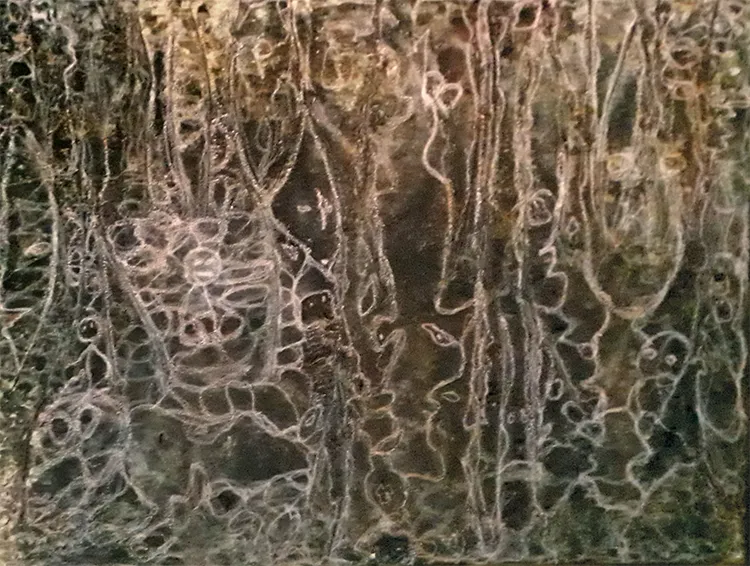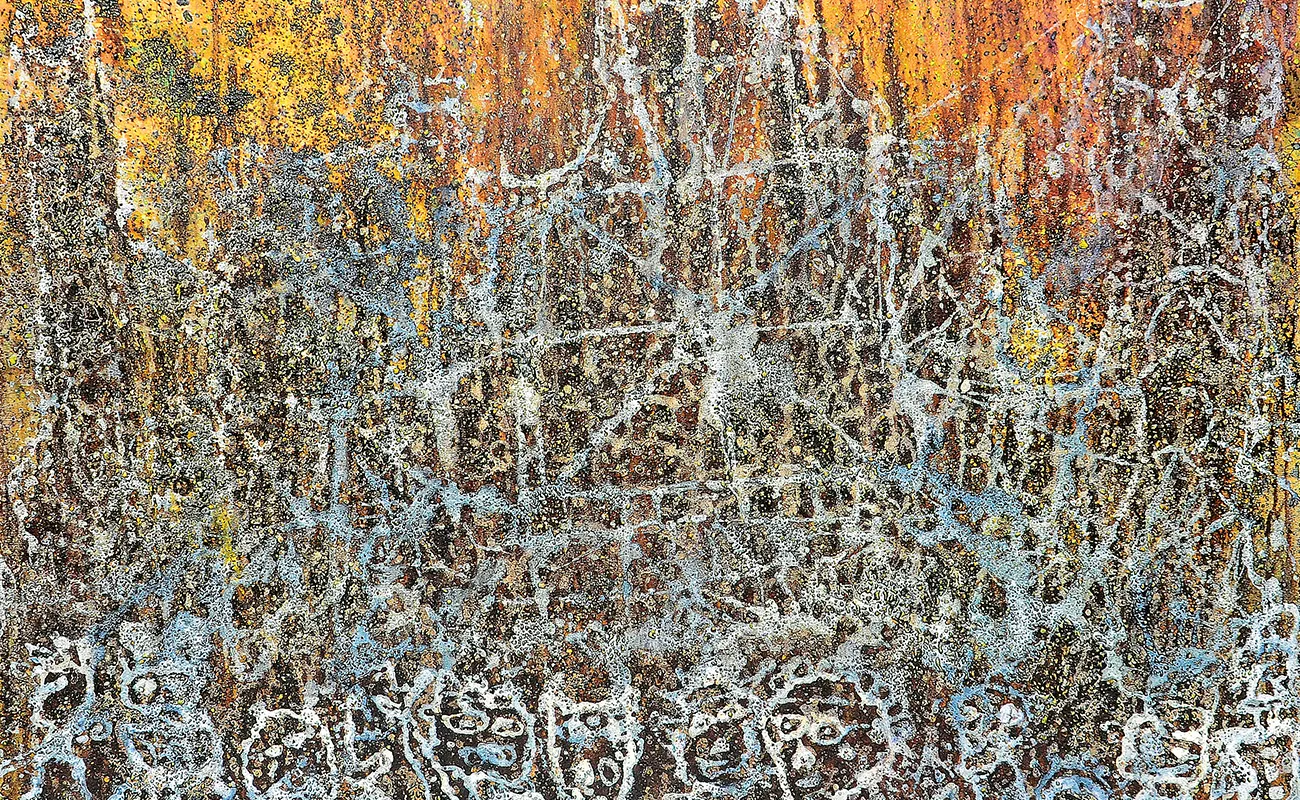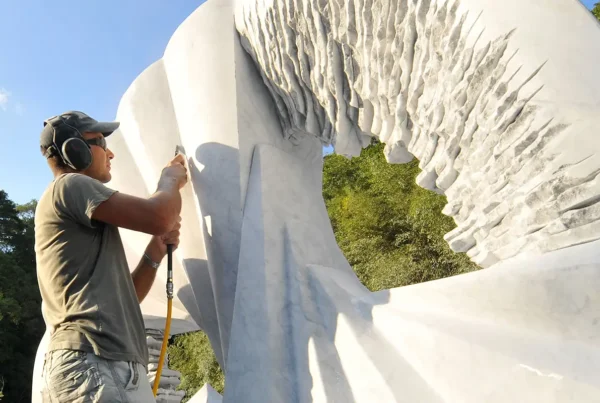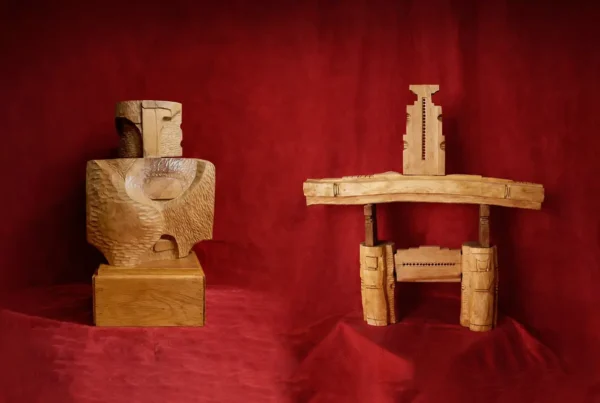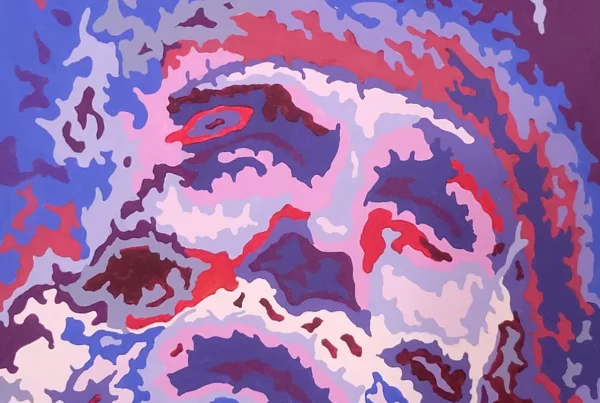“Tar and Art have always been synonymous in nature for me, in using Tar to create paintings, I believe that everyday materials get transposed into a realm where nuances resonate in different and multiple ways.”
The Birth of an Artistic Vision: From Theatre to Tar
Simran KS Lamba, a mixed media artist and sculptor from New Delhi, has a unique artistic journey that finds its roots in a moment of serendipity. In 2006, while renovating his studio, Lamba encountered tar—a material often overlooked, yet brimming with expressive possibilities. This discovery marked the beginning of his transformation from a professional in the television industry to an experimental artist. His previous background in theatre and filmmaking, particularly his experience with the rigid visual norms of early 2000s television in Mumbai, drove him to seek a more flexible form of artistic language. Dissatisfied with mainstream aesthetics, he returned to Delhi and began experimenting with tar, leading to his first body of work in 2009.
Lamba’s artistic process is deeply influenced by his theoretical background, which he draws from his theatre roots, combined with his fascination for diverse surface textures. His work blurs the boundary between the intellectual and the sensory, merging the conceptual with the tactile. He explores the interplay between materials, using textures to provoke thought and challenge traditional perceptions of art. This multifaceted approach culminated in a successful solo show at the Visual Arts Gallery, IHC New Delhi, which established his career as a public artist and provided the foundation for his subsequent exhibitions across India.
For Lamba, the act of creating is both introspective and intuitive. He does not adhere to rigid structures or predetermined formats; instead, he lets his subconscious guide his creative process. The freedom to move beyond conventional boundaries allows him to explore the depths of his imagination, resulting in works that are often abstract, emotionally charged, and reflective of the chaotic beauty of his inner world.
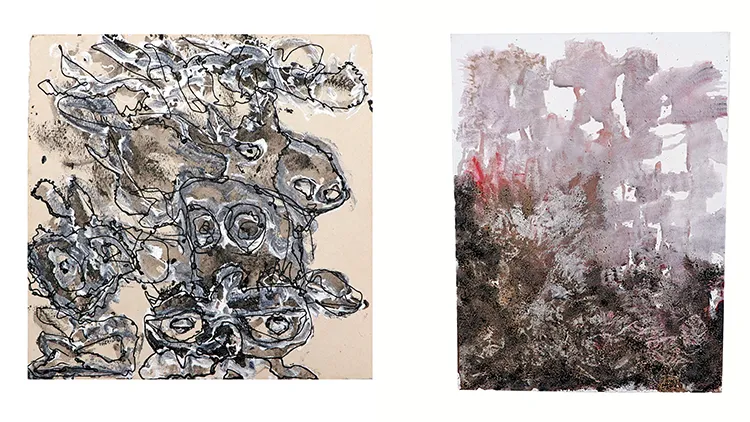
Simran KS Lamba: The Power of Transformation in Art
Lamba’s artistic style can be best described as a convergence of the discarded and the reimagined. His work utilizes a variety of materials that carry intrinsic beauty or hold significant contextual relevance. Tar, in particular, plays a central role in his artistic expression, serving as more than just a medium—it becomes a symbol of transformation, recontextualizing everyday industrial waste into sophisticated art pieces. By incorporating tar and other recycled materials into his artwork, Lamba elevates these substances into a new artistic dimension, allowing their natural characteristics to emerge in surprising and evocative ways.
Recycling lies at the core of Lamba’s artistic practice. He frequently sources his materials from scrap shops and junkyards, finding inspiration in discarded waste. His art often begins with found objects—objects that, once reclaimed, become central to the themes he wishes to explore. In his hands, a piece of industrial refuse can become a metaphor for rebirth, individuality, and unity, embodying a narrative that resonates with both the material’s history and Lamba’s own imaginative interpretations. This process of amalgamation is a recurring motif in his work, where the old meets the new, the discarded finds a voice, and the mundane is transformed into the extraordinary.
His mixed media approach pushes the boundaries of what art can be, focusing on the journey of transformation each material undergoes. This is perhaps best illustrated by his work “Genesis,” and specifically the painting “Zebra Crossing,” where elements such as radiator parts, wire mesh, and plumbing components were embedded into a composition that depicted a stretch of tarmac. These found objects were not merely decorative; they spoke to the themes of movement, displacement, and the intertwining of human-made and natural elements. The symbolism behind his work is rich, where every piece of scrap finds new life, creating a dialogue between the viewer and the materials themselves.

Material, Memory, and the Intuitive Process
For Lamba, the studio environment is a place of convergence, where ideas, materials, and time interact to shape his creations. He surrounds himself with artworks in various stages of completion, allowing each piece to evolve organically. This approach, in which multiple pieces are worked on simultaneously, fosters an environment where themes, textures, and ideas cross-pollinate, leading to unexpected connections and a deeper exploration of his chosen materials. The process-driven nature of his work means that each composition undergoes a long period of gestation, allowing the material to mutate and change, which, in turn, influences the direction of the final piece.
Time is a crucial element in Lamba’s work. His process is not hurried; instead, he lets his artworks evolve at their own pace. This extended timeline allows him to reflect on each composition, revisiting it only after it has been sufficiently “marinated” in his thoughts and subconscious musings. This reflective period is an integral part of his process, providing depth and nuance to his final pieces. When he returns to a work, it is with a fresh perspective and a renewed focus, which helps him achieve the intended emotional and aesthetic resonance without distractions.
Distractions, for Lamba, are almost nonexistent in his creative process. By letting each piece rest and returning to it only when he is ready, he eliminates the possibility of forced creativity or external influences disrupting his vision. The space between iterations allows him to engage with his work with a clarity and purpose that is evident in the final product. This methodical approach results in a body of work that feels both spontaneous and carefully curated, each piece carrying the weight of its own history and the artist’s introspection.
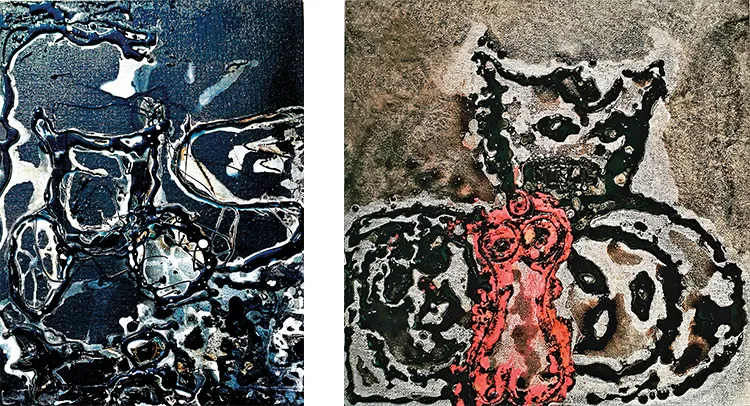
Simran KS Lamba: The Influence of Fashion and Future Endeavors
Lamba draws significant inspiration from his mother, a pioneering fashion designer in India who has played a crucial role in shaping the country’s fashion industry since the 1980s. His mother’s dedication to reviving indigenous craftsmanship and traditional embroidery techniques, such as the ‘Kaantha’ stitch, left an indelible mark on Lamba’s own artistic ethos. The emphasis on cultural heritage, handcrafting traditions, and a commitment to innovation are themes that resonate strongly in Lamba’s work. The influence is evident not only in the materials he chooses but also in his meticulous attention to the relationship between form, texture, and cultural context.
One of Lamba’s most cherished works, “Zebra Crossing,” holds particular significance for him. This piece encapsulates his approach to art—combining tarmac with found objects, each of which carried its own narrative of displacement and reuse. By integrating elements like drain covers and automotive parts, Lamba transformed these materials into a commentary on the intersections of human intervention and the natural world. The artwork’s title, alongside its composition, evokes imagery of both urban infrastructure and the untold stories of discarded objects, making it a powerful reflection on themes of movement, journey, and the blending of disparate worlds.
Looking forward, Lamba envisions expanding his practice into the realm of exterior sculptures, utilizing tar and tarmac to explore themes surrounding humanity’s impact on nature. His desire is to juxtapose the elasticity and malleability of tar with natural elements, creating a dialogue about the encroachment of human activities on the environment. This ambitious project is not just an extension of his current work but a reimagining of scale and context, inviting viewers to engage with his themes in a broader, more immersive way. It is a testament to his commitment to challenging himself as an artist and his belief in the potential of everyday materials to convey profound messages.
